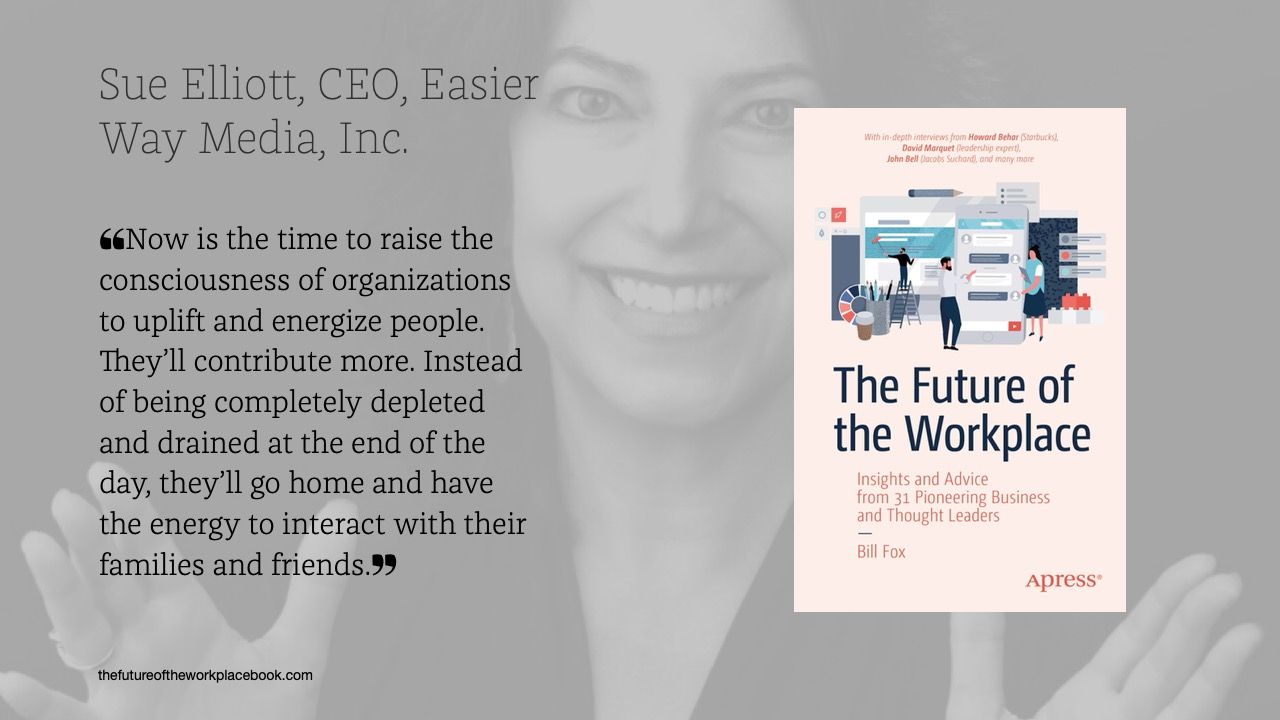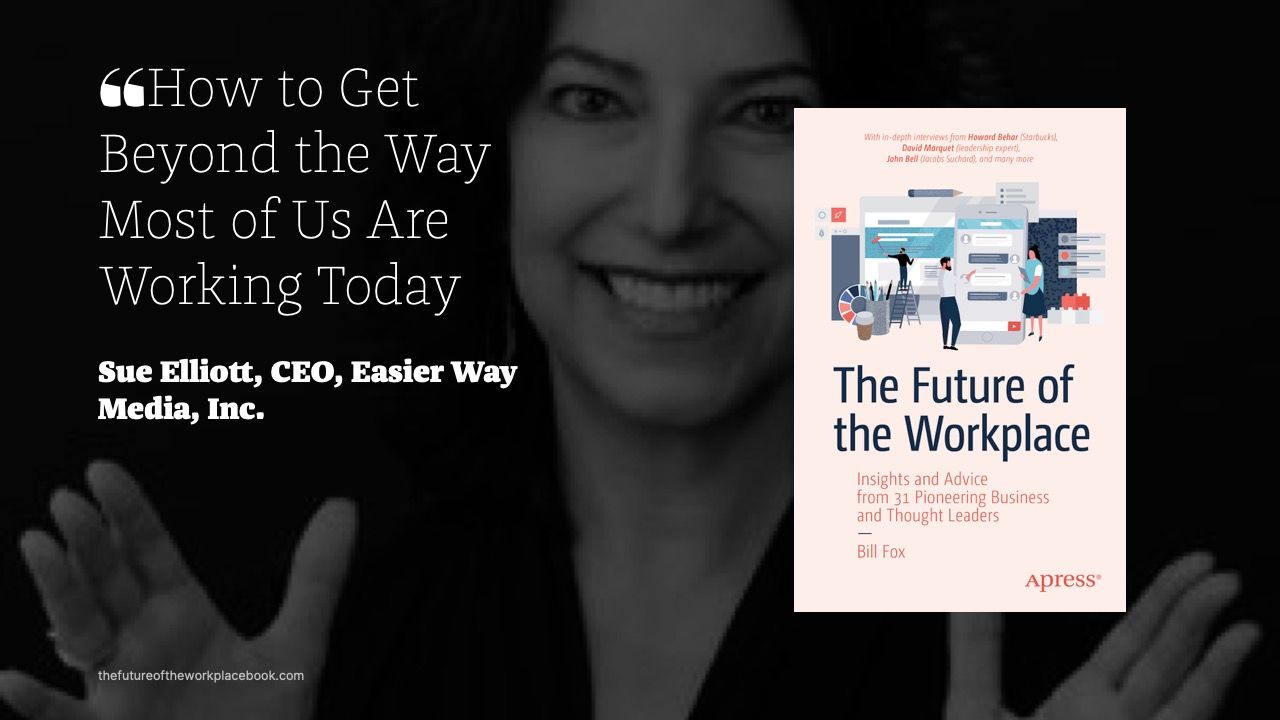How to Get Beyond the Way Most of Us Work Today
In this interview excerpt, Sue Elliott tells us that organizational transformation is a process of personal transformation. And it definitely starts at the top

Sue Elliott: Angel Coach and CEO at Easier Way Media, Inc.
At Forward Thinking Workplaces, we are discovering the people, insights, and strategies that lead to Forward Thinking minds, leaders, and workplaces of the future — today. Forward Thinking conversations will define the great workplaces of the 21st century. Check out our upcoming Events page or visit billfox.co to learn more.
How can we create workplaces where every voice matters, everyone thrives and finds meaning, and change and innovation happen naturally?
Sue Elliott: This is a question that’s near and dear to my heart because the vast majority of workplaces suck the life out of people. We don’t always think of it this way, but organizations are actual entities.
Organizations have their own collective consciousness, which is created, in part, by the business’s culture and core values.
And unfortunately, most workplaces today are incredibly draining: People drag themselves home at the end of the day, exhausted and often demoralized.
I believe now is the time to raise the consciousness of organizations to uplift and energize people. Then people will want to get out of bed and go to work in the morning. They’ll be able to contribute more. And instead of being completely depleted and drained at the end of the day, they’ll be excited about the contribution they made, and they’ll go home and have the energy to interact with their families and friends.
This kind of organizational transformation is, to a great degree, a process of personal transformation. In other words, it’s about how we’re showing up at work. And it definitely starts at the top: Is the CEO somebody who is closed off and unavailable, or somebody who’s open and receptive?
When something goes wrong, do we approach it with an attitude of interrogation, as in We must get to the bottom of this! Or are we coming at it with curiosity, asking, What’s really happening here? I wonder what caused that... When I say it like that, it’s pretty easy to feel which approach will get people to open up and share what’s going on and which approach will trigger people into being defensive and protective and closed off, right?
What does it take to get an employee’s full attention and best performance?
Sue: One powerful way is to listen. When we allow somebody to talk about something that matters to them, we’re getting their full attention, leading directly to getting their best performance. So as a leader, it’s important to go in, ask a powerful, open-ended question, and then listen.
Bill: How do you define listening? How do you really listen?
Sue: That’s a great question. People are starting to use the phrase deep listening. I like active listening. I believe that active listening requires us to be fully present. We have to let go of preconceived notions of how things should be, and we have to stop thinking about what we want to say next or what we want the other person to understand.
Instead, we have to get out of our heads and fully focus on what the other person is saying. And not just the words coming out of their mouth: Does their body language go with what they’re saying? Are they getting tenser? Are they getting more relaxed? Asking very simple questions can help, like: I just noticed a shift in you. What happened there?
Simply be present and show interest.
What do people really lack and long for at work?
Sue: People long to feel seen, heard, and appreciated. We’ve touched on helping people feel seen and heard, so let’s talk about appreciation. Your people are giving you their 8 hours or 10 hours or however long it may be every day, and they want to feel like somebody notices and cares: not just that there’s a butt on the seat, but that it’s my butt!
They also want to feel a connection. They want to feel camaraderie.
Studies show that the #1 key indicator of happiness in life is having a friend at work.
That’s so simple. But it takes a certain kind of workplace for that even to be possible, right?
Also, people want to feel like they’re contributing to something greater. We may show up and do our one little piece of the puzzle every day, but we want to know how it connects to the bigger picture.
There was a study of college students making calls to raise money for scholarships. If the students just did the fundraising calls with minimal training or support, they had minimal success. But if the students read a letter from one of the scholarship recipients and then made the calls, their performance went up dramatically. And if one of those students on scholarship came in and spent just 5 minutes with the fundraisers, talking about how the scholarship made a difference in their life, then the fundraisers’ performance went off the charts! They could see the effects of what they were doing, and it was meaningful.
In other words, connecting what people are doing with something meaningful doesn’t take a lot of time. It doesn’t take a lot of energy. Yet there’s a huge payoff: People are way more willing to do the work, and they’re going to do that work at a much higher level.
Note: This is a preview of the full interview. The complete interview was selected by Apress for publication and continues in The Future of the Workplace.
